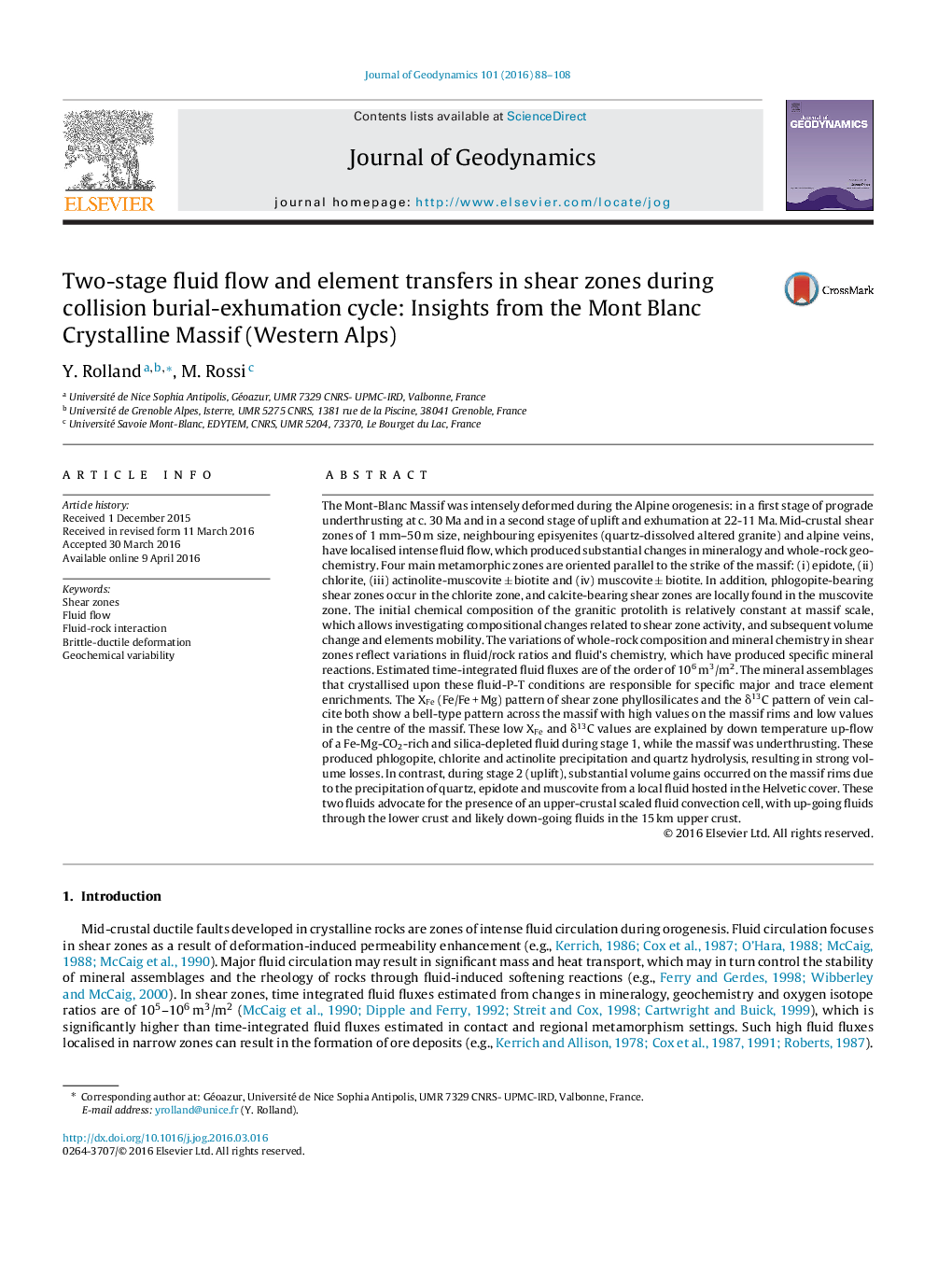| کد مقاله | کد نشریه | سال انتشار | مقاله انگلیسی | نسخه تمام متن |
|---|---|---|---|---|
| 4687918 | 1635749 | 2016 | 21 صفحه PDF | دانلود رایگان |
• Mont Blanc Massif deformed in 2 stages: 30 Ma underthrusting, 22-11 Ma extrusion.
• Four main metamorphic zones are distinguished, oriented parallel to the strike of the massif.
• Variations of rock and mineral chemistry in shear zones reflect fluid/rock interactions.
• During stage 1, low XFe − δ13C values due to down temperature up-flow of a Fe-Mg, CO2 fluid.
• During stage 2, precipitation of qtz, ep and musc from local fluids of the Helvetic cover.
The Mont-Blanc Massif was intensely deformed during the Alpine orogenesis: in a first stage of prograde underthrusting at c. 30 Ma and in a second stage of uplift and exhumation at 22-11 Ma. Mid-crustal shear zones of 1 mm–50 m size, neighbouring episyenites (quartz-dissolved altered granite) and alpine veins, have localised intense fluid flow, which produced substantial changes in mineralogy and whole-rock geochemistry. Four main metamorphic zones are oriented parallel to the strike of the massif: (i) epidote, (ii) chlorite, (iii) actinolite-muscovite ± biotite and (iv) muscovite ± biotite. In addition, phlogopite-bearing shear zones occur in the chlorite zone, and calcite-bearing shear zones are locally found in the muscovite zone. The initial chemical composition of the granitic protolith is relatively constant at massif scale, which allows investigating compositional changes related to shear zone activity, and subsequent volume change and elements mobility. The variations of whole-rock composition and mineral chemistry in shear zones reflect variations in fluid/rock ratios and fluid’s chemistry, which have produced specific mineral reactions. Estimated time-integrated fluid fluxes are of the order of 106 m3/m2. The mineral assemblages that crystallised upon these fluid-P-T conditions are responsible for specific major and trace element enrichments. The XFe (Fe/Fe + Mg) pattern of shear zone phyllosilicates and the δ13C pattern of vein calcite both show a bell-type pattern across the massif with high values on the massif rims and low values in the centre of the massif. These low XFe and δ13C values are explained by down temperature up-flow of a Fe-Mg-CO2-rich and silica-depleted fluid during stage 1, while the massif was underthrusting. These produced phlogopite, chlorite and actinolite precipitation and quartz hydrolysis, resulting in strong volume losses. In contrast, during stage 2 (uplift), substantial volume gains occurred on the massif rims due to the precipitation of quartz, epidote and muscovite from a local fluid hosted in the Helvetic cover. These two fluids advocate for the presence of an upper-crustal scaled fluid convection cell, with up-going fluids through the lower crust and likely down-going fluids in the 15 km upper crust.
Figure optionsDownload as PowerPoint slide
Journal: Journal of Geodynamics - Volume 101, November 2016, Pages 88–108
